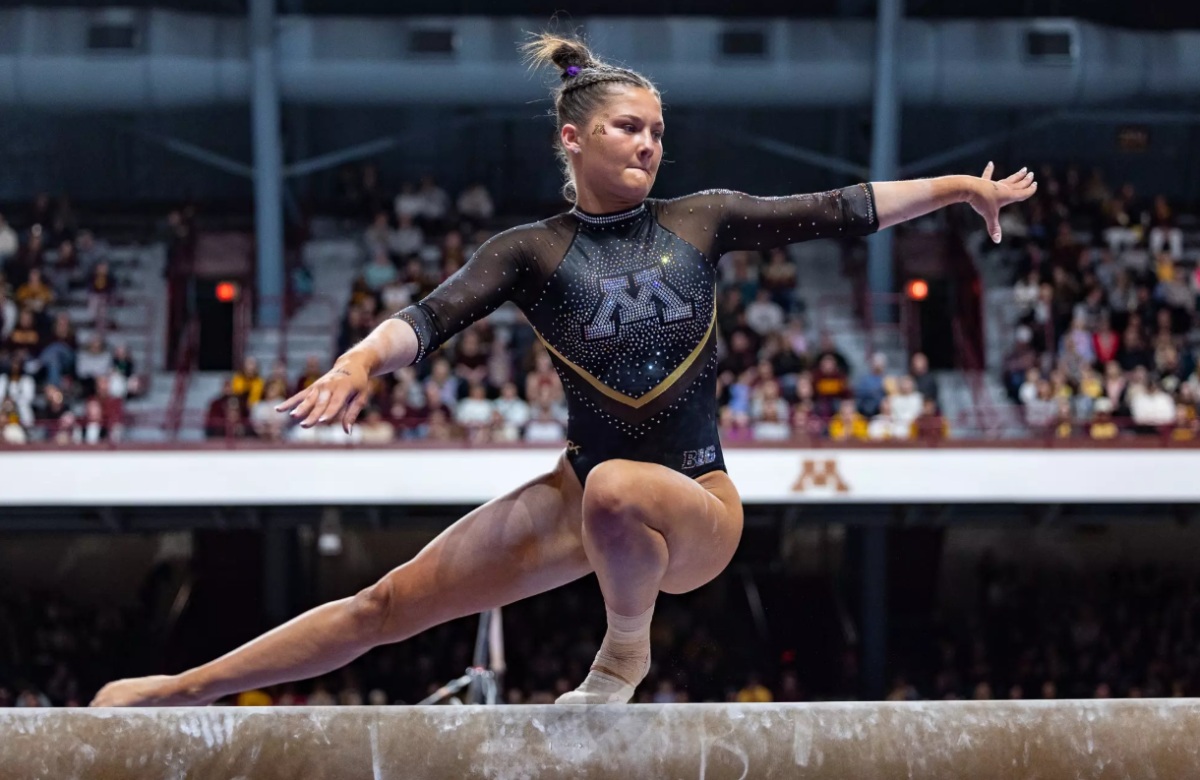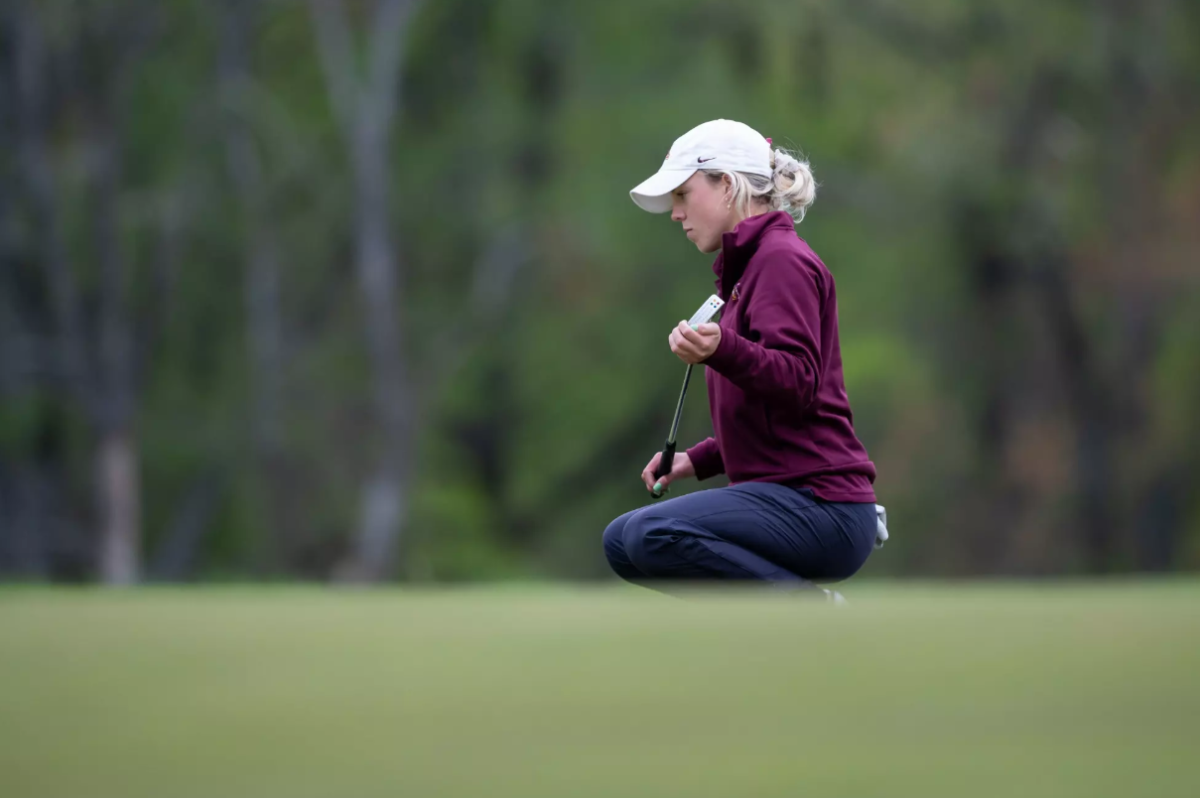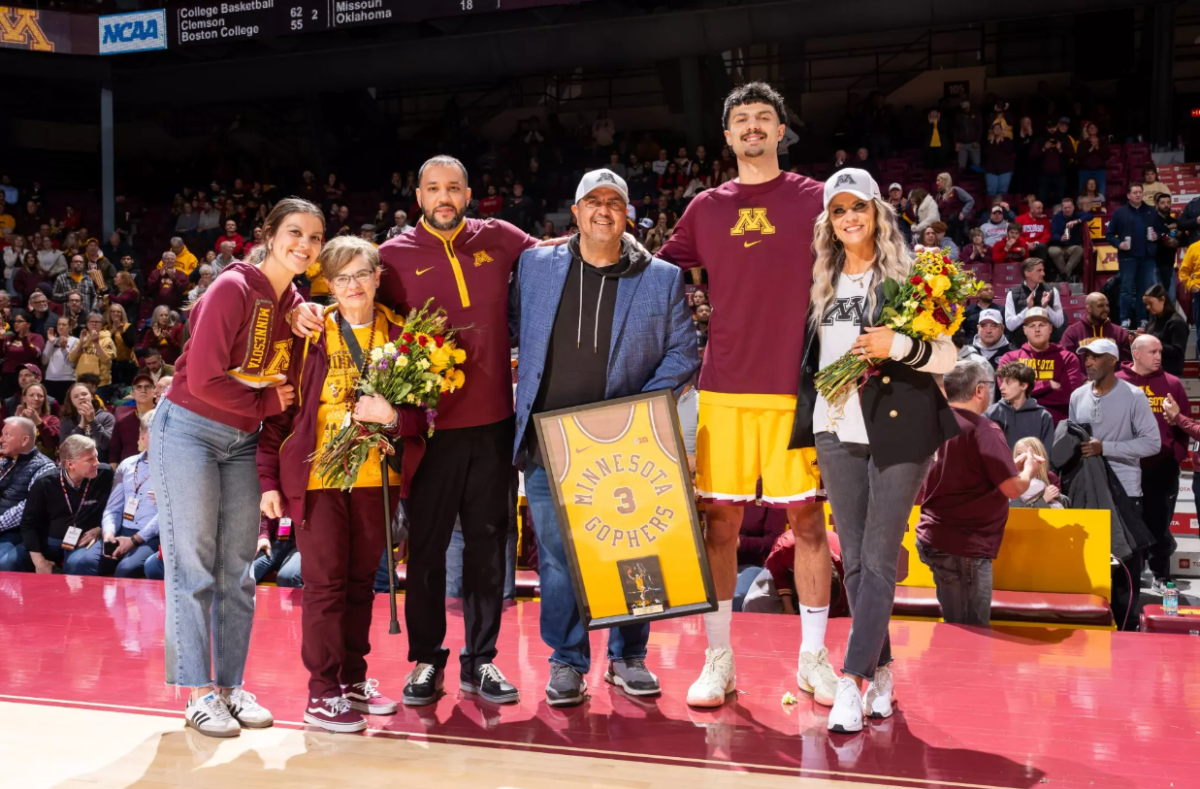Clay Estes watched Andy Roddick win the 2003 U.S. Open last September with friends and teammates on Minnesota’s men’s tennis team. During the match he muttered, “I beat him.”
Estes, who was ranked one of the top 10 junior players in the country as a 16-year-old in Amarillo, Texas, has defeated current professionals such as Roddick and Lleyton Hewitt – both of whom have been ranked No. 1 in the world.
“After I say that, people ask me, ‘What happened?’ ” the senior said with a laugh. “They will ask, ‘Who have you beaten in the last two years?’ That’s why sometimes people say I live in the past.”
But recalling the past, which also includes a 1999 National Indoor Championship, not only gives Estes a chance to brag about beating professionals. It’s also an opportunity to tell about two important people and the second chance they gave him.
Three years ago, Estes was standing at a crossroads. In his freshman season at Texas Tech University, a mysterious arm injury that doctors still can’t fully explain caused him to quit the team and make some serious life choices.
After the injury – which caused his entire arm to lose feeling and strength – Estes sat down with Texas Tech coach Tim Siegel about hanging up his tennis career. Estes said Siegel told him he was making excuses and that he’d heard stories about Estes growing bored with tennis before.
“I wasn’t necessarily burned out; I just liked doing other things,” Estes said. “When I was 16 or 17, I got my car. My (tennis) practice habits slipped. There were so many other things to do.”
Once during a large regional tournament in 1997, Estes simply left and didn’t play tennis for the rest of that summer. He took a break and started up again the next year where he had left off.
“Clay needed the break,” said Avery Ticer, Estes’ teammate in high school and at Minnesota. “He is the type of player who doesn’t need to practice a lot to be on top of his game.”
But college was different. Siegel was notorious for his grueling practice schedule, and Estes’ injury required extra hours of rehabilitation each day. Putting in more than eight hours of tennis a day, his grades slipped and he quit the team.
After telling his parents he no longer had a scholarship and he was done with tennis, their reaction was swift and stern – get a job.
“It was a shock,” Estes said. “I hadn’t held a serious job in high school. I was always going all over the place to play in tournaments. It really sucked.”
In order to pay for school, Estes decided he needed to alternate semesters between work and school.
“I didn’t know what to do, if I went at that rate, it would have taken me like 14 years to get through school,” he said.
It has only taken five. Much of that has to do with a phone call from Minnesota tennis coach David Geatz and a good word from an old “court” friend.
Geatz had seen Estes play in junior tournaments and recruited him to play for the Gophers. But after Estes decided to go to Texas Tech, he was a distant thought in Geatz’s mind when a spot opened up on the Gophers’ roster two years ago.
Ticer, who had just finished his freshman season at Minnesota, told Geatz that Estes would make a great fit on the team. Estes – who is two years older than Ticer – had been Ticer’s mentor, and the two had been playing together in Amarillo since Ticer was 13.
“I had heard rumors about him not playing anymore and that he had problems with his arm,” Ticer said. “But I knew how good of a player he was and how much he had done for me.”
Geatz called Estes and told him the Gophers needed a guy to play No. 5 and No. 6 singles and that the team would work with his injury. He then offered him a scholarship.
Estes said it took him four days to make up his mind. Not only was he disillusioned by coach Siegel losing confidence in him, but he was also reluctant to venture far away from home.
“It was a tough decision,” he said. “Not many people from Texas leave Texas. It was the most hectic week of my life. But it was a second chance. I thought my tennis career was over.”
Estes took Geatz’s offer after finally deciding it would be “stupid” not to take it. He came to Minnesota and joined the team as the 2002-03 season was just under way.
In his time with the Gophers, Estes has done exactly what coach Geatz has wanted him to do – play when he can and give the Gophers a solid force to occupy the lower spots on the singles lineup.
As for the questions concerning Estes’ work ethic and his commitment, Geatz said it hasn’t been a problem.
“He has worked as hard as he can,” Geatz said. “He’s a competitor and an extremely talented player. When it comes to match time, he has always been ready to play.”
Estes said playing on a team with good chemistry has brought back the enjoyment of playing tennis.
“I have had more fun playing here than I thought I ever could at one time,” he said. “When we win, everyone celebrates together.”
He credits Geatz for the invitation and Ticer for “opening his mouth” and giving him an opportunity to move forward and no longer live in the past.
Team given regional bid
The Gophers (14-9) were awarded a bid for this year’s NCAA Championships and will play the first and second rounds in Durham, N.C. The 37th-ranked Gophers will play No. 33 Clemson (22-11) in the first round May 15.
Fifth seed Duke (19-7) takes on Winthrop (16-4) in the other first round matchup in Durham. The two winners play May 16 in the regional final for a bid into the final four rounds in Tulsa, Okla.
Buergis is All-Big Ten
Women’s tennis No. 1 singles player Angela Buergis was named to the All-Big Ten team for the second consecutive year.
The senior is ranked 70th in the nation with a 17-10 overall and 15-6 dual mark in singles. She was 7-3 in Big Ten play. In doubles, she teamed with sophomore Nischela Reddy to go 21-15 overall and 3-5 in Big Ten play.







